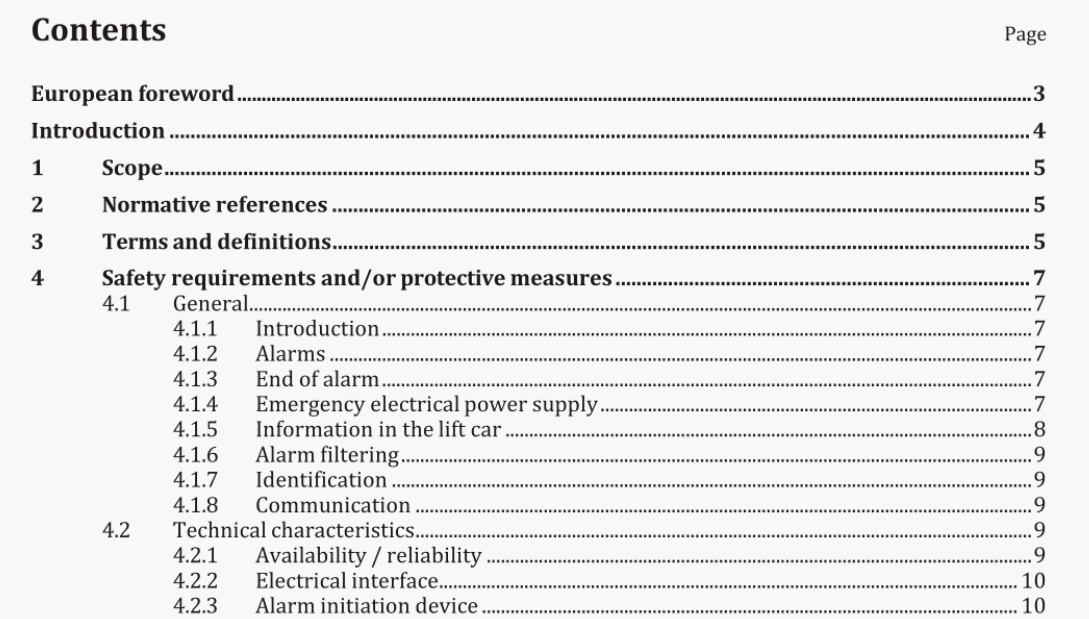BS EN 81-28:2018 pdf download.Safety rules for the construction and installation of lifts – Lifts for the transport of persons and goods
1 Scope
This European Standard applies to alarm systems for all types of passenger and goods passenger lifts, in particular those covered in the EN 81 series. This European Standard also deals with the minimum information to be provided as part of the instruction manual related to maintenance and the rescue service. This European Standard deals with the following significant hazard relevant to lifts when they are used as intended and under the conditions foreseen by the installer/manufacturer: – entrapment of users due to the lift not working properly. This European Standard is not applicable to alarm systems intended to be used to call for help in other cases, e.g. heart attack, seeking information. This European Standard is applicable to alarm systems used for lifts manufactured and installed after the date of publication by CEN of this standard. However, this European Standard can be taken into account when applied to existing lifts. EN 81 -70 gives additional requirements for persons with disabilities (e.g. inductive loop, alarm button).
4.1 General
4.1.1 Introduction
Alarm systems shall comply with the safety requirements and/or protective measures of Clause 4. In addition, alarm systems shall be designed according to the principles of EN ISO 12100 for hazards relevant but not significant which are not dealt with by this document.
4.1.2 Alarms
The alarm equipment shall ensure that subject to 4.1.6 alarm filtering, the full alarm information (see 4.1.7) will be emitted until acknowledgement, even during maintenance. If an emission fails before acknowledgement, the delay between re- emission(s) shall be reduced to the minimum compatible with the communication network. Where the characteristics of the communication network require (see EN 81- 20:2014, 0.4.2 e]) and f the communication is interrupted any re – emission after acknowledgement shall not be impeded by the alarm equipment. The alarm system shall be able to accept communication from the rescue service until the end of the alarm has occurred. Emission of the alarm information to the transmitter shall not be delayed, except during alarm filtering. Between the acknowledgement and the end of alarm, any alarm filtering shall be bypassed. After acknowledgement, if the communication is interrupted, the alarm equipment shall stop automatic re- emission.
4.13 End of alarm
Means shall be provided to enable indication, from the alarm system to the rescue service, that the alarm has been dealt with and no user is trapped in the lift. The end of alarm shall be initiated from the lift installation to which the alarm belongs. The means to initiate the end of alarm shall be accessible only to competent persons. Remote resetting of the alarm equipment shall be possible.
BS EN 81-28:2018 pdf download
